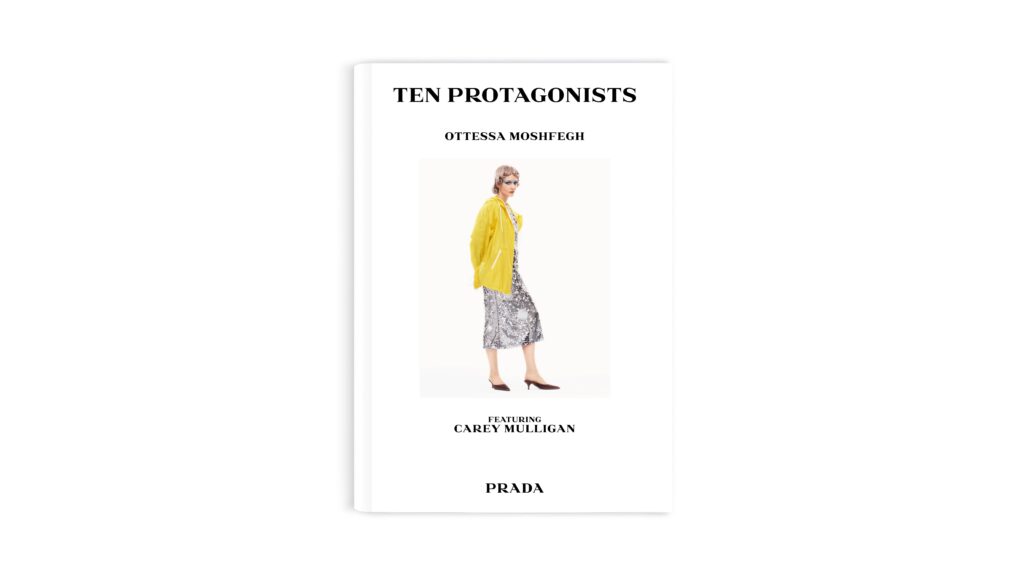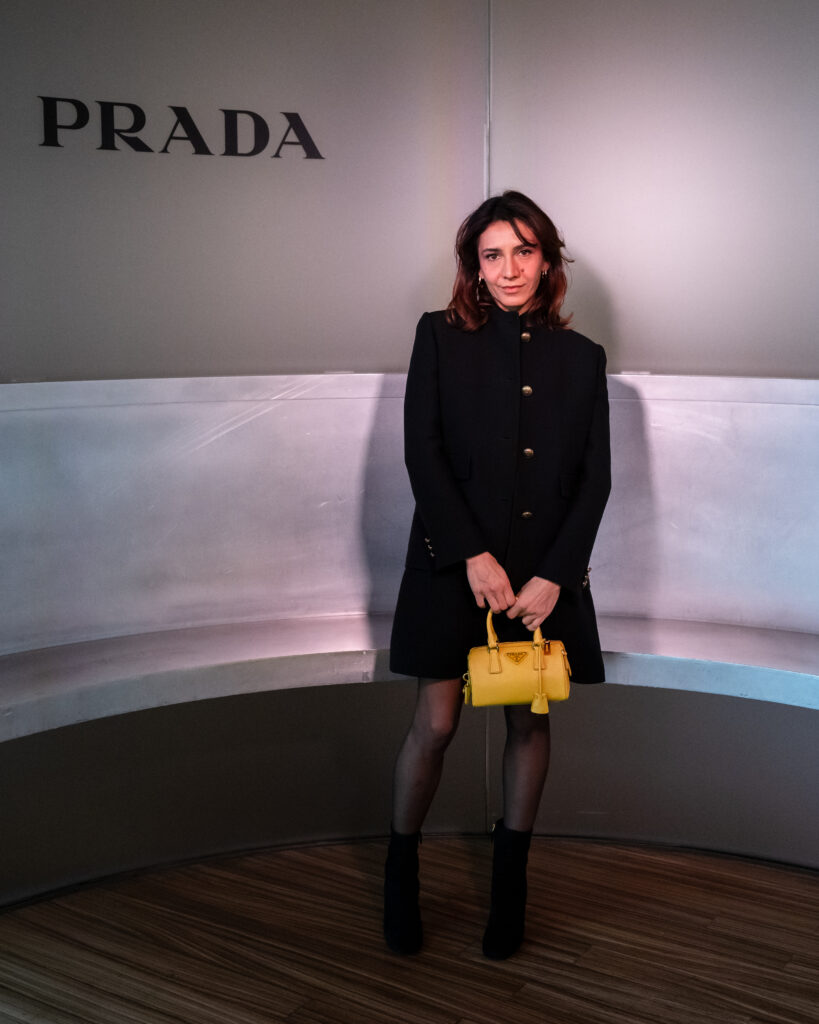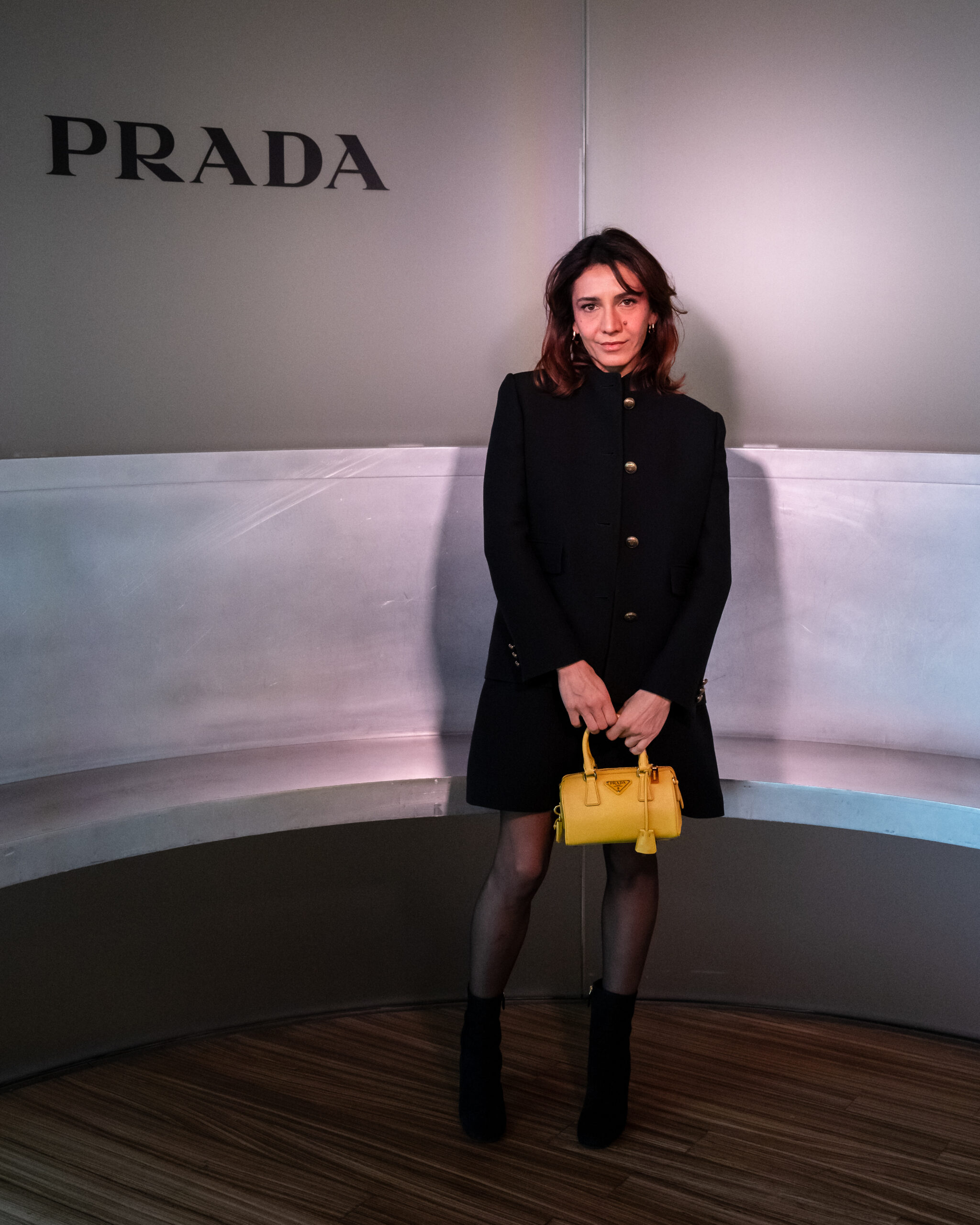The literary world does not overlap with fashion quite as frequently or obviously as, say, the realms of art or even athletics. However, the two industries—which often flirt with one another rather than committing to anything more formal—have had a few historical engagements. Who can forget Celine’s eyewear campaign with Joan Didion, or even Valentino’s incorporation of quotes from Hanya Yanagihara’s A Little Life in their Narratives Collection?
But Prada’s latest campaign, “10 Protagonists,” is a standout achievement. It represents the creative union of renowned author Ottessa Moshfegh—known for works such as Eileen and My Year of Rest and Relaxation—and the brand’s visionary team, including Miuccia Prada herself. The campaign not only features striking photography but also offers in-depth character development crafted by Moshfegh. Because what is fashion, if not storytelling?
Below, V spoke to Moshfegh to discuss how she went about creating one of the industry’s most memorable fashion campaigns to date, which happens to star Carey Mulligan, shot by Steven Meisel.

Mathias Rosenzweig: Can you tell us about the sequence of events in terms of devising these protagonists and bringing them to life? I saw that you were explaining each character to Carey in real time.
Ottessa Moshfegh: So basically, I watched the runway show and thought a lot about the collection. I also watched some interviews with the designers about that specific season and how the approach was really different. I began there, and then I think what happened next was Prada sent me the 10 looks, and I saw test shots with Carey at some point—when she went in for her fitting. Along the way, given the looks, I invented these protagonists. I hadn’t written a lot about each of them, but I wrote a little something that I thought captured the spirit of the story I wanted to tell about them—who each woman was, what she was up to, what made her cool, what she was worried about, and what she wanted. Then on the day of the shoot—as you saw in the Zoom video—it was incredible because every time she came in, she had a new look, new makeup, and an incredible new wig. Each time, I thought, “Whoa, hello.” It was so funny—I knew the looks and the wigs were coming, but seeing the actual character come to life that day was so much fun. Sometimes Car asked me a few questions; we talked about random things that connected to a movement or an attitude the character might have. It was really cool to interact virtually—not just texting or talking on the phone. It felt like a directing moment, transmitting a feeling about who this person is. Carey was incredibly open and fluid, and even though I’d never met her before, it was pure joy.
MR: That on-camera interaction was really fun to see. I loved having a look into the creation of these characters as the shoot went on.
OM: Another unexpected element was that the shoot was done over two days and required music on set. So I put together a song list for each character. Sometimes the photographer, Mr. Meisel, would ask for a different song because one was too syncopated. Over those two days—even though I hadn’t met Mr. Meisel, and wasn’t involved in the musical direction—there was a shared understanding on set of how Carey would respond to each unique character while the music played.
Then, a couple of days later, they sent me the photographs, and that’s when the really hard work started. It became less fun because I was doing it all by myself, but it was amazing to work narratively as a fiction writer in this form—short stories about characters that preexisted in an adaptation. You know what I mean? Usually, I write a novel. In the case of my first novel, Eileen, I co-wrote an adaptation of the film, and it was uncanny to see a character that started in my imagination—with visual description, language, a story, background, context—and then, eight years later, walk onto the set and talk to an actress who is dressed as Eileen, looks like Eileen, talks like Eileen, and moves like Eileen.
MR: How did you go about aligning these characters with the world of Prada? Obviously, they needed to fit into a certain realm.
OM: There was a bit of trial and error. I first had to absorb what the campaign was about and understand the season’s concept—the idea that each look represents a different woman, linking the archive with an imagined future. I saw these individuals as having both a past and a future, doing something unique while still fitting together as a cohesive cast.
So I thought about my point of departure for each portrait. I felt the approach needed to be a bit slanted and detached—not entirely straightforward—which helped me get into the minds and bodies of these characters, who were very different from me and from each other. As a creative artist, it was important that each woman had a talent and a passion—essentially, a career. It was about the intersection of being professional and being an individual, and how our choices and the curiosity our talents spark shape us. I considered what she did, what she loved, and how her work was complicated by her personality. I developed a schematic for each character. The hardest one was the first—Tabitha was just the first character I started writing. Her name wasn’t originally Tabitha—it began as something completely different. But I knew from the moment I envisioned her on the page where she was, what the light was like, what she was doing, and who was around her. It all had a fantastical, almost surreal quality—there was an element of the paranormal or miraculous. I found each character inspiring. I loved the hair and makeup in this one.
MR: The makeup and hair styling really elevated the character—it wasn’t an afterthought at all.
OM: It’s insane. And why this yellow windbreaker? And then, the sparkle of the sequin gown and the light—okay, she’s a nature photographer. It might not make sense on paper, but I had to imagine reflective light, a bit of mist, and the need for a jacket. It was all about capturing her unique vision of light and the outdoors.
MR: I’ve worked for V for seven years, and I know people are often more interested in the images we create than the words on our pages. It was so nice seeing a fashion brand really prioritizing the art of writing and narrative in this way.
OM: And you know what? It makes me feel good because I appreciate fashion in so many ways. Fashion is an aesthetic experience—it’s something we wear that tells a story. It’s not just superficial; even though photos are effective, they carry an entire universe that inspires life. But whenever I write, I get to know a character—I practically ransack their imaginary closet, try on all their clothes, and even note how they drop their trousers in a pile of dirty laundry. It’s intimate, yet it’s the one thing everyone sees.
Discover More


